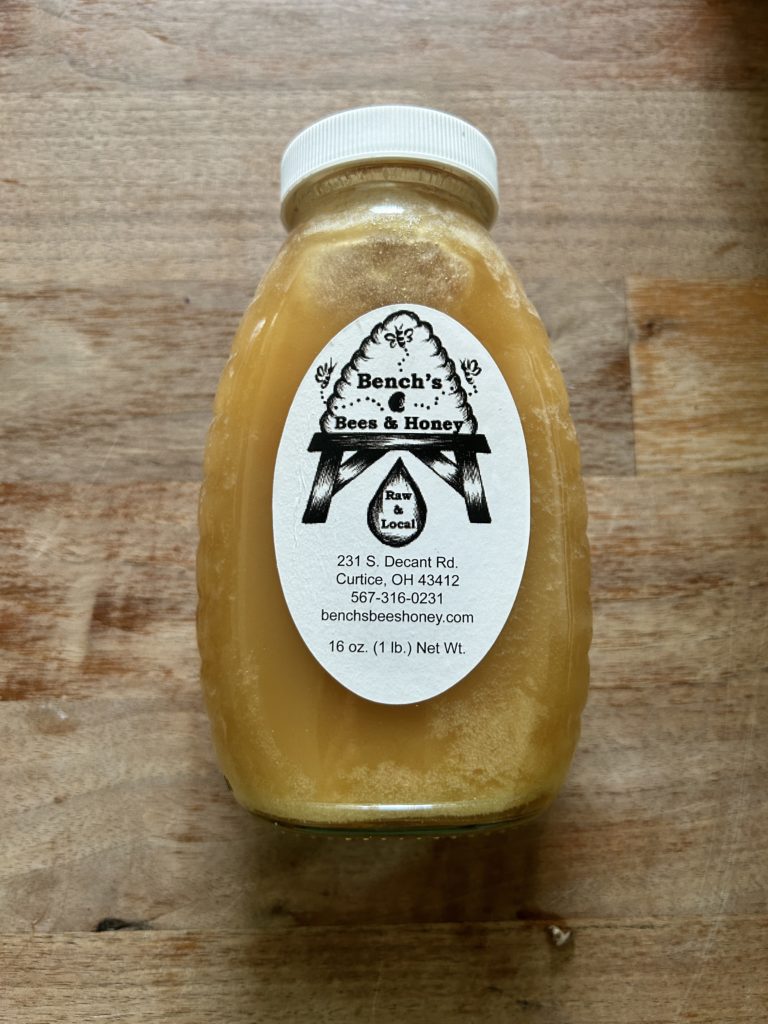How to Safely De-Crystallize Honey
Honey is a delightful, natural sweetener that can add flavor and health benefits to a variety of dishes. However, if you’ve ever found your honey turning into a gritty, solid mass, you’ve encountered crystallized honey. Our brother Arik Bench is a bee-keeper. (We actually rent his bees every year for our vegetable fields). We often get his delicious honey to sell in our online store. In the winter time, this honey often crystallizes. And it can be hard to use that way.
Understanding why honey crystallizes and how to safely de-crystallize it can help you keep your honey smooth and usable.

Why Honey Crystallizes
Honey crystallizes due to its natural composition. Here are the key factors that contribute to this process:
- Natural Sugars: Honey is a supersaturated solution, primarily composed of glucose and fructose. Glucose tends to crystallize faster than fructose, leading to the formation of sugar crystals.
- Temperature: Honey crystallizes more rapidly at lower temperatures. The ideal temperature for honey storage is between 50°F and 70°F (10°C and 21°C). Temperatures below this range can speed up the crystallization process.
- Pollen and Particles: Natural honey contains small particles, such as pollen, which can act as nuclei for crystallization. The more particles present, the more likely honey is to crystallize.
- Water Content: Honey with lower water content crystallizes faster. The water-to-glucose ratio is a critical factor in determining how quickly honey will crystallize.
Is Crystallized Honey Bad?
Crystallized honey is not bad or spoiled; it’s simply in a different state. In fact, it retains all its natural flavors and health benefits. Some people even prefer the texture of crystallized honey for spreading on toast or mixing into yogurt.
How to De-Crystallize Honey Safely
De-crystallizing honey is a simple process, but it’s important to do it safely to preserve the honey’s quality. Here are the steps to follow:
- Warm Water Bath:
- Step 1: Place the jar of crystallized honey in a pot or bowl.
- Step 2: Fill the pot or bowl with warm water. The water should be around 100°F to 110°F (38°C to 43°C), warm enough to melt the crystals but not hot enough to damage the honey.
- Step 3: Let the honey sit in the warm water, stirring occasionally, until the crystals dissolve. This can take anywhere from 30 minutes to a few hours, depending on the amount of honey and the degree of crystallization.
- Step 4: If the water cools down before the honey is fully de-crystallized, replace it with more warm water.
- Avoid Direct Heat: Never microwave honey or place it directly on a stovetop. Excessive heat can destroy the beneficial enzymes and alter the flavor.
- Use a Gentle Approach: If you have a large container of honey, you can de-crystallize it in small batches to ensure even heating and avoid overheating.
Preventing Crystallization
To slow down the crystallization process, consider these storage tips:
- Store at Room Temperature: Keep honey in a warm place, but not above 70°F (21°C).
- Use a Glass Jar: Glass jars are better at maintaining a consistent temperature compared to plastic.
- Keep it Airtight: Seal the container tightly to prevent moisture from getting in, which can accelerate crystallization.
Crystallization is a natural process that doesn’t affect the quality or taste of honey. By understanding why honey crystallizes and how to safely de-crystallize it, you can enjoy smooth, golden honey whenever you need it. Store your honey properly to slow down crystallization, and remember that a warm water bath is your best friend when it comes to returning your honey to its liquid state.
